(4-吡啶基)丙酮, 99%,(4-Pyridyl)propanone
产品编号:西域试剂-WR378324| CAS NO:6304-16-1| MDL NO:MFCD00129043| 分子式:C8H9NO| 分子量:135.17
本网站销售的所有产品仅用于工业应用或者科学研究等非医疗目的,不可用于人类或动物的临床诊断或者治疗,非药用,非食用,
| 产品名称 | (4-吡啶基)丙酮, 99% |
|---|---|
| 英文名称 | (4-Pyridyl)propanone |
| CAS编号 | 6304-16-1 |
| 产品熔点 | 13°C |
| 产品沸点 | 232.5±15.0 °C at 760 mmHg |
| 产品密度 | 1.0±0.1 g/cm3 |
| 产品闪点 | 100.1±27.8 °C |
| 精确质量 | 135.068420 |
| PSA | 29.96000 |
| LogP | -0.05 |
| 蒸气压 | 0.1±0.5 mmHg at 25°C |
| 折射率 | 1.509 |
| 稳定性 | 常温常压下稳定,黄色液体。 |
| 储存条件 | 避光,阴凉干燥处,密封保存 |
相关文档
化学品安全说明书(MSDS)
下载MSDS质检证书(COA)
相关产品
| 风险声明 (欧洲) | R36/37/38 |
|---|---|
| 安全声明 (欧洲) | S26-S36/37/39 |
| 海关编码 | 2933399090 |
|
(4-Pyridyl)acetone
Revision number: 5
SAFETY DATA SHEET Section1. IDENTIFICATION Product name:(4-Pyridyl)acetone Revision number:5 Section2. HAZARDS IDENTIFICATION GHS classification PHYSICAL HAZARDSNot classified HEALTH HAZARDS Skin corrosion/irritationCategory 2 Category 2A Serious eye damage/eye irritation ENVIRONMENTAL HAZARDSNot classified GHS label elements, including precautionary statements Pictograms or hazard symbols Signal wordWarning Hazard statementsCauses skin irritation Causes serious eye irritation Precautionary statements: Wash hands thoroughly after handling. [Prevention] Wear protective gloves/eye protection/face protection. IF IN EYES: Rinse cautiously with water for several minutes. Remove contact lenses, [Response] if present and easy to do. Continue rinsing. If eye irritation persists: Get medical advice/attention. IF ON SKIN: Gently wash with plenty of soap and water. If skin irritation occurs: Get medical advice/attention. Take off contaminated clothing and wash before reuse. Section3. COMPOSITION/INFORMATION ON INGREDIENTS Substance/mixture:Substance Components:(4-Pyridyl)acetone Percent:>98.0%(GC) CAS Number:6304-16-1 Synonyms:4-Acetonylpyridine C8H9NO Chemical Formula: Section4. FIRST AID MEASURES Inhalation:Remove victim to fresh air and keep at rest in a position comfortable for breathing. Get medical advice/attention if you feel unwell. (4-Pyridyl)acetone Section4. FIRST AID MEASURES Skin contact:Remove/Take off immediately all contaminated clothing. Gently wash with plenty of soap and water. If skin irritation or rash occurs: Get medical advice/attention. Eye contact:Rinse cautiously with water for several minutes. Remove contact lenses, if present and easy to do. Continue rinsing. If eye irritation persists: Get medical advice/attention. Ingestion:Get medical advice/attention if you feel unwell. Rinse mouth. A rescuer should wear personal protective equipment, such as rubber gloves and air- Protection of first-aiders: tight goggles. Section5. FIRE-FIGHTING MEASURES Suitable extinguishingDry chemical, foam, water spray, carbon dioxide. media: Unsuitable extinguishing Solid streams of water media: Precautions for firefighters: Fire-extinguishing work is done from the windward and the suitable fire-extinguishing method according to the surrounding situation is used. Uninvolved persons should evacuate to a safe place. In case of fire in the surroundings: Remove movable containers if safe to do so. Special protectiveWhen extinguishing fire, be sure to wear personal protective equipment. equipment for firefighters: Section6. ACCIDENTAL RELEASE MEASURES Personal precautions,Use personal protective equipment. Keep people away from and upwind of spill/leak. protective equipment and Ensure adequate ventilation. Entry to non-involved personnel should be controlled emergency procedures: around the leakage area by roping off, etc. Environmental precautions: Prevent product from entering drains. Methods and materials for Absorb spilled material in a suitable absorbent (e.g. rag, dry sand, earth, saw-dust). containment and cleaning In case of large amount of spillage, contain a spill by bunding. Adhered or collected up: material should be promptly disposed of, in accordance with appropriate laws and regulations. Section7. HANDLING AND STORAGE Precautions for safe handling Technical measures:Handling is performed in a well ventilated place. Wear suitable protective equipment. Prevent generation of vapour or mist. Wash hands and face thoroughly after handling. Use a ventilation, local exhaust if vapour or aerosol will be generated. Advice on safe handling: Avoid contact with skin, eyes and clothing. Conditions for safe storage, including any incompatibilities Storage conditions:Keep container tightly closed. Store in a cool and dark place. Store under inert gas. Store away from incompatible materials such as oxidizing agents. Air-sensitive Comply with laws. Packaging material: Section8. EXPOSURE CONTROLS / PERSONAL PROTECTION Engineering controls:Install a closed system or local exhaust as possible so that workers should not be exposed directly. Also install safety shower and eye bath. Personal protective equipment Respiratory protection: Vapor respirator. Follow local and national regulations. Hand protection:Protective gloves. Safety glasses. A face-shield, if the situation requires. Eye protection: Skin and body protection: Protective clothing. Protective boots, if the situation requires. (4-Pyridyl)acetone Section9. PHYSICAL AND CHEMICAL PROPERTIES Physical state (20°C):Liquid Form:Clear Slightly pale yellow - Yellow Colour: Odour:No data available pH: No data available Melting point/freezing point:No data available 80°C/0.04kPa Boiling point/range: Flash point:No data available Flammability or explosive limits: No data available Lower: Upper:No data available 1.07 Relative density: Solubility(ies): No data available [Water] [Other solvents]No data available Section10. STABILITY AND REACTIVITY Chemical stability:Stable under proper conditions. Possibility of hazardous No special reactivity has been reported. reactions: Incompatible materials: Oxidizing agents Hazardous decomposition Carbon monoxide, Carbon dioxide, Nitrogen oxides (NOx) products: Section11. TOXICOLOGICAL INFORMATION Acute Toxicity:No data available Skin corrosion/irritation: No data available Serious eyeNo data available damage/irritation: Germ cell mutagenicity: No data available Carcinogenicity: IARC =No data available No data available NTP = Reproductive toxicity:No data available Section12. ECOLOGICAL INFORMATION Ecotoxicity: Fish:No data available Crustacea:No data available Algae:No data available Persistence / degradability: No data available BioaccumulativeNo data available potential(BCF): Mobility in soil Log Pow:No data available Soil adsorption (Koc):No data available Henry's LawNo data available constant(PaM3/mol): Section13. DISPOSAL CONSIDERATIONS Recycle to process, if possible. Consult your local regional authorities. You may be able to burn in a chemical incinerator equipped with an afterburner and scrubber system. Observe all federal, state and local regulations when disposing of the substance. (4-Pyridyl)acetone Section14. TRANSPORT INFORMATION Hazards Class:Does not correspond to the classification standard of the United Nations UN-No:Not listed Section15. REGULATORY INFORMATION Safe management ordinance of dangerous chemical product (State Council announces on January 26, 2002 and revised on February 16,2011): Safe use and production, the storage of a dangerous chemical, transport, loading and unloading were prescribed. SECTION 16 - ADDITIONAL INFORMATION N/A |
| 上游产品 9 | |
|---|---|
| 下游产品 6 | |

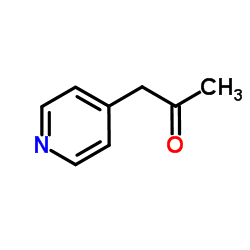

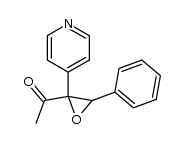
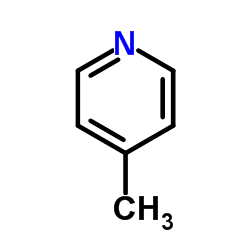
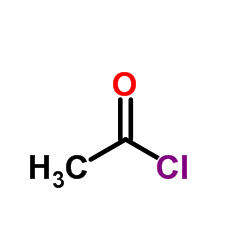
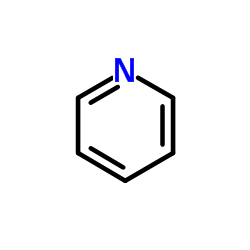
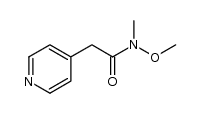

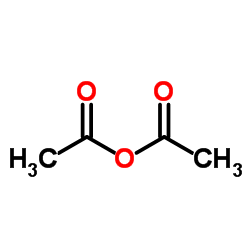
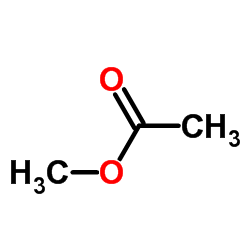
![[1-(2,6-dichloro-benzyl)-1H-[4]pyridyliden]-acetone结构式](/20230522/111500-01-7.png)
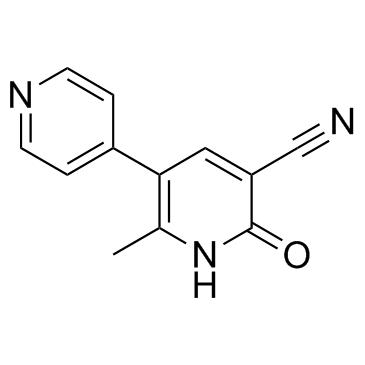
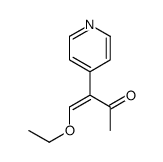
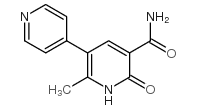
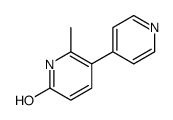
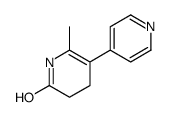
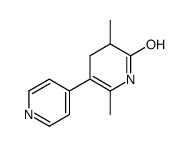





 浙公网安备 33010802013016号
浙公网安备 33010802013016号